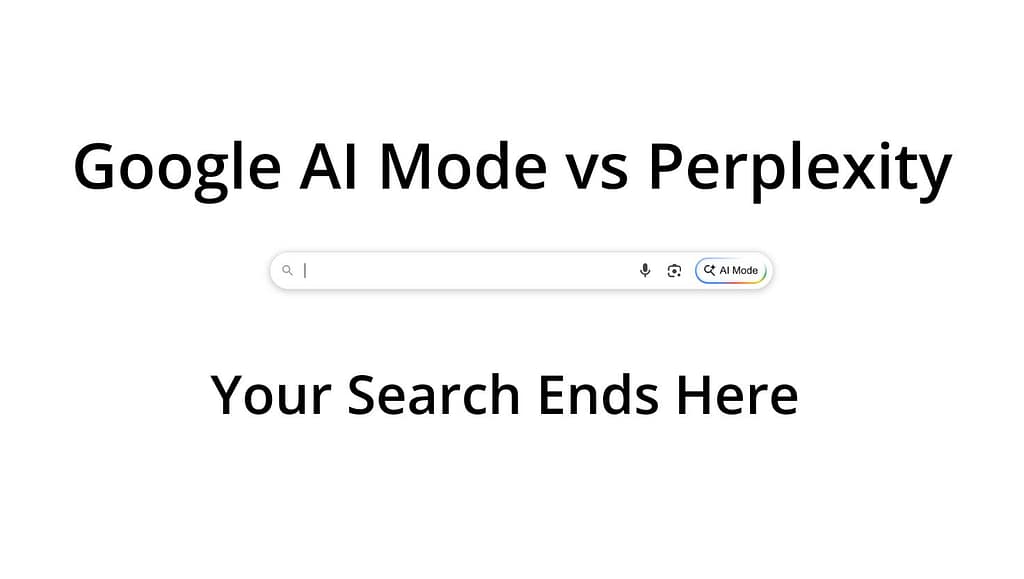Google AI Mode organizes information smartly and gives clear, intuitive answers to your questions, along with links for further exploration. For deeper, more detailed insights, you can use Deep Search in AI Mode — Google Search’s most advanced research tool.
The way we search for information is evolving rapidly, and Google’s latest innovation AI Mode represents a significant leap forward in how we interact with search engines.
Launched in 2025 as an experimental feature, Google AI Mode is transforming the traditional search experience into something more conversational, comprehensive, and intelligent.
What is Google AI Mode?
Think of Google AI Mode as your personal research assistant powered by artificial intelligence. Built on Google’s advanced Gemini 2.5 Pro model, this feature goes far beyond the familiar list of blue links we’ve grown accustomed to. Instead, it acts as part search engine, part chatbot, and part research companion, creating a fundamentally different way to explore information online.
When you ask a question in AI Mode, the system doesn’t just find relevant web pages, it browses hundreds of sites simultaneously, analyzes the information, and crafts a comprehensive, fully-cited report in just minutes.
This approach allows users to get deeper, more nuanced answers to complex questions without having to manually sift through multiple sources.
How Does Google AI Mode Work?
The magic behind AI Mode lies in its sophisticated “query fan-out technique.” When you submit a question, the AI breaks it down into multiple subtopics and issues numerous related queries simultaneously.
This parallel processing approach allows the system to gather information from diverse perspectives and sources, providing a more complete picture than traditional search methods.
For example, if you ask about “the impact of remote work on productivity,” AI Mode might simultaneously research productivity studies, employee satisfaction surveys, company case studies, and expert opinions, then synthesize all this information into a coherent, well-sourced response.
Key Features of Google AI Mode
Conversational Search Experience
Unlike traditional search, AI Mode allows you to have ongoing conversations about your topics of interest. You can ask follow-up questions, request clarifications, or dive deeper into specific aspects of your original query all while maintaining context from your previous interactions.
Comprehensive Source Citation
Every claim and piece of information in AI Mode’s responses comes with proper citations and links to original sources. This transparency allows users to verify information and explore different perspectives on the topics they’re researching.
Search History and Continuity
AI Mode remembers your search sessions, allowing you to return to previous conversations and continue where you left off. This feature is particularly valuable for complex research projects that span multiple sessions.
Multi-Perspective Analysis
Rather than presenting a single viewpoint, AI Mode actively seeks out diverse perspectives on topics, helping users understand the full scope of debates, controversies, and varying expert opinions.
Who Can Access Google AI Mode?
Currently, AI Mode is available as an experimental feature through Google’s Search Labs program. Users in the United States, United Kingdom, and India can access this feature in English by opting into the “AI Mode” experiment. As with most experimental features, availability may expand over time based on user feedback and system performance.
What is Perplexity Labs? How is Perplexity Labs different from regular Perplexity search?
Perplexity AI vs Google AI Mode
| Feature | Perplexity AI | Google AI Mode |
| Interface Design | Clean, chat-like, purpose-built | Text-heavy, requires navigation steps |
| Response Accuracy | High accuracy, current information | Mixed results, sometimes outdated data |
| Visual Presentation | Tables, images, maps, structured data | Dense text blocks, limited visuals |
| Commercial Bias | Minimal, research-focused | Heavy shopping integration, sales-oriented |
| Mobile Experience | Consistent across devices | Particularly challenging on mobile |
| Chat History Access | Easy, intuitive navigation | Multi-step process, harder to find |
| Source Citations | Clear, transparent citations | Comprehensive but can be overwhelming |
| Geographic Availability | Broader global reach | US, UK, India (English only) |
| Setup Complexity | Immediate use, no setup | Requires Search Labs opt-in |
| Response Speed | Fast, optimized responses | Very fast, leverages Google infrastructure |
| Follow-up Questions | Natural conversation flow | Functional but less intuitive |
| Data Sources | Curated quality sources | Massive web index, hundreds of sites |
| Best Use Cases | Research, unbiased recommendations | Quick facts, Google ecosystem integration |
| Overall User Preference | Currently favored by users | Growing but needs improvement |
Impact on Information Discovery
Google AI Mode represents a significant shift in how we think about search and information discovery.
Traditional search requires users to formulate the right keywords and manually synthesize information from multiple sources.
AI Mode flips this model, doing much of the heavy lifting for users while maintaining transparency about its sources and reasoning.
This evolution has implications beyond individual searches. It could change how we conduct research, make decisions, and stay informed about complex topics.
For students, professionals, and curious individuals alike, AI Mode offers a more efficient path to comprehensive understanding.
Future of Search
As AI Mode continues to develop, we can expect to see further refinements in its ability to understand context, provide nuanced analysis, and deliver increasingly sophisticated responses.
The feature represents Google’s vision of search as a collaborative tool rather than just an information retrieval system.
The introduction of AI Mode signals a broader transformation in how we interact with information online.
As these tools become more sophisticated and widely available, they have the potential to make high-quality research and analysis accessible to everyone, regardless of their expertise in a particular field.
Whether AI Mode will completely replace traditional search remains to be seen, but it’s clear that it offers a compelling glimpse into the future of information discovery one where artificial intelligence serves as an intelligent intermediary between human curiosity and the vast expanse of human knowledge available online.







